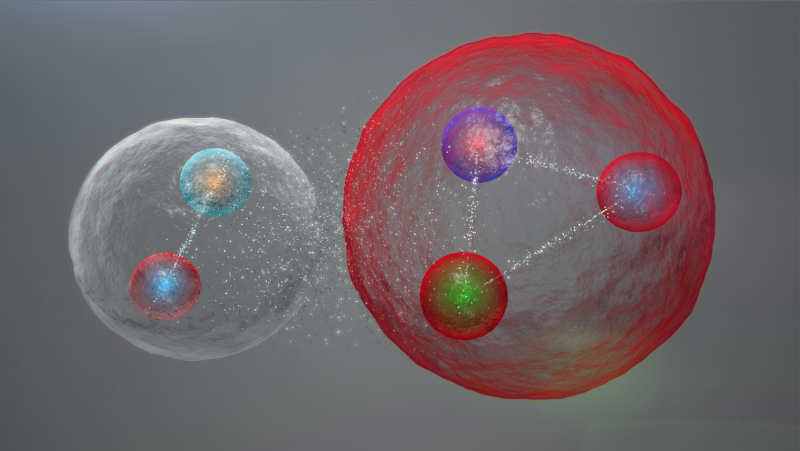For more than half a century, physicists have predicted the existence of the pentaquark, a subatomic particle that's made of four quarks and one antiquark all bound up together. Now, thanks to new experiments at the Large Hadron Collider's LHCb experiment, they've finally found it and confirmed that it's the real deal.

Quarks are the super-small elementary particles that make up the neutrons and protons that make up atoms. (Neutrons and protons are each made of three quarks.) Quarks can also combine to form an array of stranger composite particles, though, such as the pentaquark. Like the Higgs boson before it, the pentaquark's existence has been theorized for years, but experiments in the early-2000s claiming to have detected the exotic form of matter were later invalidated. Many scientists had since given up on the pentaquark for good, but this time, say CERN physicists, there's no doubt it's been found.
"The pentaquark is not just any new particle," LHCb spokesperson Guy Wilkinson said in CERN's press release about the discovery. "It represents a way to aggregate quarks, namely the fundamental constituents of ordinary protons and neutrons, in a pattern that has never been observed before in over fifty years of experimental searches. Studying its properties may allow us to understand better how ordinary matter, the protons and neutrons from which we're all made, is constituted."Copyright © 2011 - All Rights Reserved - Softron.in
Template by Softron Technology